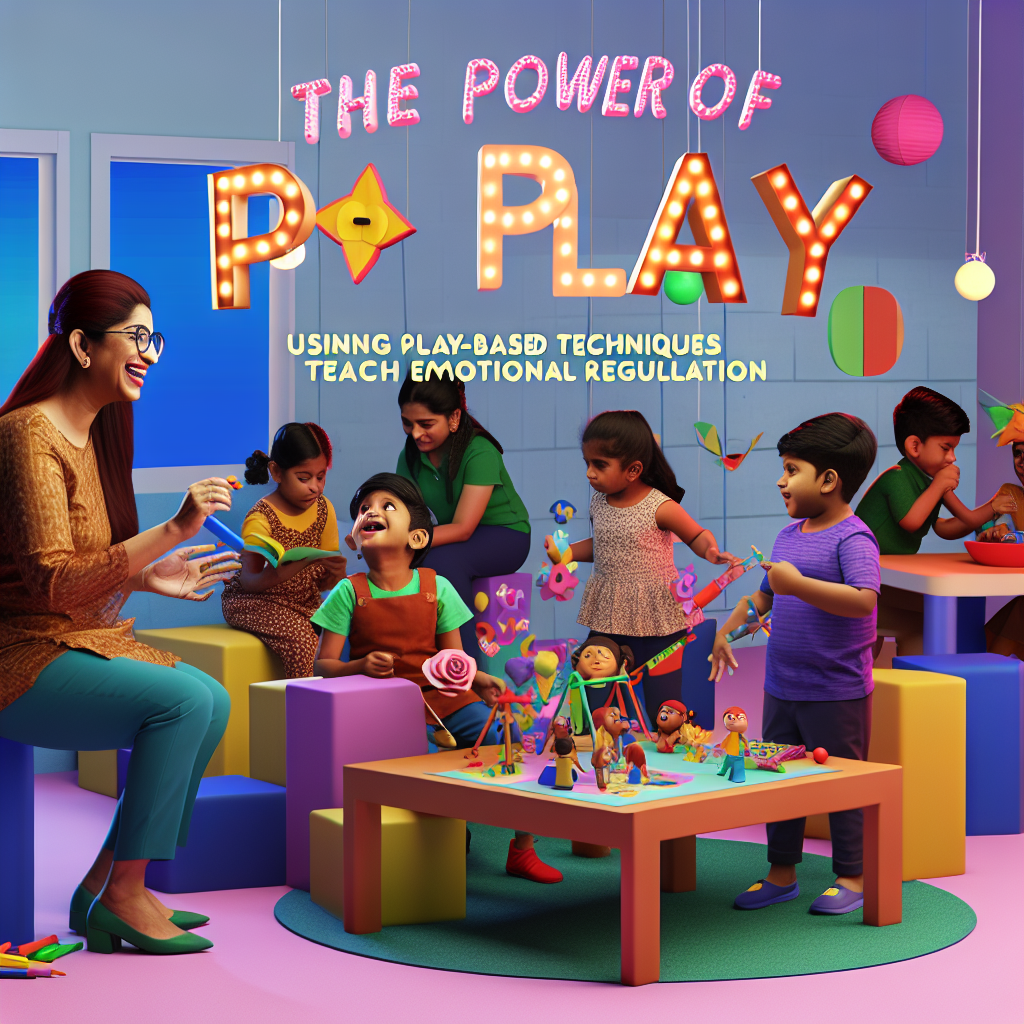
The Essential Power of Play: Using Play-Based Techniques to Teach Emotional Regulation
Introduction
In a fast-paced world where emotional intelligence is increasingly valued, finding effective methods to teach emotional regulation in children is more important than ever. The Power of Play: Using Play-Based Techniques to Teach Emotional Regulation offers a unique and engaging approach to nurturing emotional skills through playful interactions. Play is not merely a way for children to pass the time; it’s a powerful tool for learning. This article aims to delve into the transformative effects of play on emotional regulation, illustrating its relevance and importance in today’s educational landscape.
Understanding Emotional Regulation
Emotional regulation refers to the processes through which individuals manage and respond to their emotional experiences. For children, developing these skills is crucial for healthy interpersonal relationships and overall well-being. When children learn to understand and articulate their feelings, they become better equipped to handle stress, anxiety, and interpersonal conflicts.
The Role of Play in Development
Play is an intrinsic part of child development. According to the American Academy of Pediatrics, play promotes cognitive, physical, social, and emotional well-being in children. But how does this relate to emotional regulation? The answer lies in the way play creates a safe environment for children to explore their emotions.
Case Study: The Power of Dramatic Play
In a 2016 study published in the Journal of Early Childhood Research, researchers examined the effects of dramatic play on emotional regulation in preschoolers. The study found that children who engaged in dramatic play were better at recognizing emotions in themselves and others. When children role-play different scenarios, they can express their feelings and practice regulation strategies in a controlled setting.
Play-Based Techniques for Teaching Emotional Regulation
Here are some effective play-based techniques designed to foster emotional regulation in children:
1. Storytelling and Role-Playing
Storytelling can transport children into different worlds, allowing them to explore various emotions and situations. When combined with role-playing, children can act out different endings based on emotional responses.
Benefits:
- Enhances empathy
- Develops problem-solving skills
- Encourages emotional expression
2. Art and Creative Play
Art is another powerful medium through which children can express emotions that may be too complex to verbalize. Play-based art activities facilitate discussions about feelings, enabling children to articulate their emotional experiences better.
Benefits:
- Encourages self-expression
- Reduces anxiety through creative outlets
- Enhances emotional literacy
3. Board Games and Cooperative Play
Games that require teamwork and strategy provide opportunities for children to practice emotional regulation in a fun yet structured atmosphere. They can learn to manage frustration, share, and negotiate with peers.
Benefits:
- Teaches turn-taking and patience
- Promotes social skills and cooperation
- Allows for emotional experiences in a low-stress environment
Research Supporting Play-Based Techniques
Numerous studies support the efficacy of play-based techniques in teaching emotional regulation.
Table 1: Research Findings on Play-Based Techniques
| Study | Year | Findings |
|---|---|---|
| Jones et al. | 2015 | Children engaging in play-based activities showed improved emotional recognition skills compared to those in traditional settings. |
| Roberts & Jones | 2018 | Dramatic play resulted in a 30% increase in emotional vocabulary among preschoolers. |
| Smith et al. | 2020 | Art-based interventions decreased anxiety levels in children by 40%. |
The Role of Caregivers and Educators
The Power of Play: Using Play-Based Techniques to Teach Emotional Regulation should not solely rest on the shoulders of children. Caregivers, educators, and parents play an essential role in facilitating these experiences.
Supporting Play at Home
To maximize the benefits of play, caregivers should create environments that encourage emotional expression. This can include:
- Designating specific times for free play
- Allowing children to choose their activities
- Participating in play to guide emotional discussions
Educator Training
Educators should also receive training in play-based instructional strategies. Understanding child psychology and emotional development can aid teachers in creating curricula that incorporate emotional regulation effectively.
Challenges and Considerations
While play has immense potential for teaching emotional regulation, it is critical to approach it mindfully.
Common Challenges:
- Overstructuring Play: Too much guidance can stifle creativity.
- Inconsistent Environment: Children thrive in predictable settings.
- Cultural Sensitivities: Not all play translates across different cultural contexts.
Conclusion
In summary, The Power of Play: Using Play-Based Techniques to Teach Emotional Regulation is an essential approach that leverages the innate curiosity and creativity of children. Play not only serves as a vehicle for learning but also as a medium through which children can explore their emotions, thus enhancing their emotional intelligence. By embracing play, parents and educators can provide children with the tools needed to navigate their emotional worlds more effectively.
FAQs
1. How does play help in emotional regulation?
Play allows children to simulate real-world scenarios, helping them practice emotional responses in a safe environment. It enhances emotional vocabulary and empathy.
2. Can play-based techniques be effective for older children?
Absolutely! While the techniques may need to adapt for older children, play remains a powerful means for exploring emotions, even into adolescence.
3. What materials are best for play-based emotional activities?
Materials can vary based on the activity but generally include art supplies, puppets, role-play costumes, and board games.
4. How can teachers implement these techniques in the classroom?
Teachers should create a classroom culture that encourages play, include play in lesson plans, and provide materials that promote emotional discussions.
5. Are there any specific guidelines for parents to follow?
Parents should prioritize unstructured playtime, participate in activities with their children, and encourage conversations about emotions that arise during play.
Incorporating The Power of Play: Using Play-Based Techniques to Teach Emotional Regulation into everyday practices can dramatically enhance children’s emotional skills, fostering a generation that is both emotionally intelligent and resilient.

















